THE GATTERs OF BOHEMIA
Sabert, Wlachei, Hühnerwasser
Gatters appeared in Bohemia in several locations during
the 17th and 18th centuries. However, the family was always confined to
the northern areas bordering Saxony and Silesia. We find them in Görkau,
Leitmeritz and the in foothills to the west and south-west of Mount Jeschken.
Interestingly enough also the bordering kingdoms of Silesia and Saxony
were home of several Gatter families. There is even documentary proof
of cross border relations. One Gatter family moved around 1710 from Silesia
to the town of Leitmeritz.
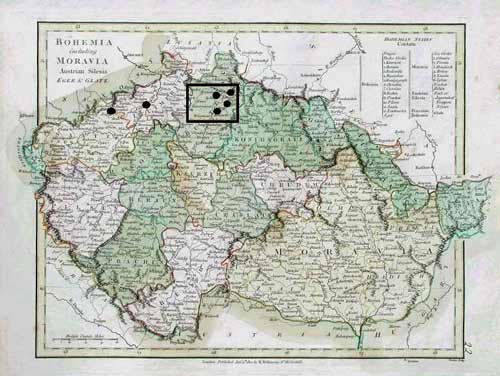 |
|
Bohemia and its administrative divisions ("Kreise") in around 1800. The places of origin of Bohemian Gatter families are markted with black dots. The rectangle is enlarged in another map further down. |
In the Jeschken area the family appears in several villages at the eve of the 30 years war (Budikov, Sabert, Krassa, Zetten, Aue, etc.). Most likely this is all one family since the geographical area is quite small. Most of these families disappear again over the centuries. Only the Krassa and Sabert lines survive.
The Krassa line soon spreads to neigboring Kunnersdorf and Oschitz. While the parish registers list the early members of that family as "Gatter", already in the third and fourth generation (around 1700) a shift in name towards "Gattermann" has taken place.
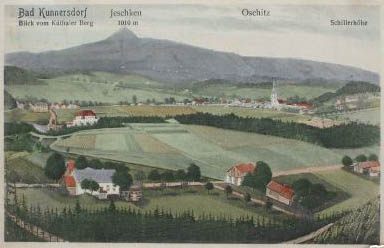 |
|
|
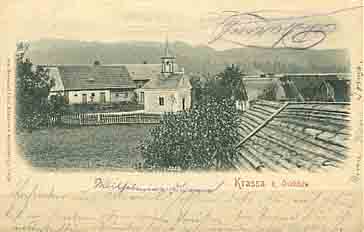 |
The Gattermann family lived in the area around Mount Jeschken, namely in the town of Oschitz (see picture above) until the expulsion of the Germans from Bohemia in 1945. The Gatter family of Budikow and Sabert was also listed as "Gattermann" from time to time. The stonemason Wentzel Gatter (see below) was born in 1795 as "Gatter" and died in 1840 as "Gattermann". Some family members were listed as "Gatter vulgo Gattermann", meaning they were called Gattermann as nickname even though their name was Gatter. |
|
|
The Village of Krassa, origin of
the Gattermann family
|
These were however exceptions. Despite many spelling variations, such as Gater, Gotter, Gotr, Koter, Kotter, Katter, Kater, Katerin (for females), Gotrmann, Kotromon, etc., the family name until today remained Gatter. Some of these spelling variations like "Gotr" can be attributed to the Czech priests who updated the parish registers (in Czech vowels are often dropped and consonants are dominant).
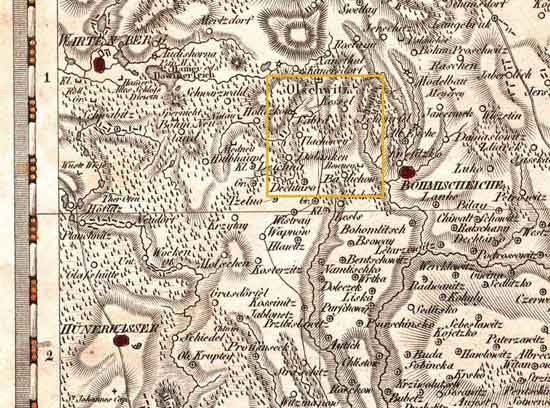 |
|
The village of Sabert, located between Wartenberg, Hühnerwasser and Böhmisch Aicha |
|
The villages Sabert (Zabridi) (in red), Wlachei (Vlachovey), Dolanken, Budikow and Zetten were long the centers of the Gatter family (see map cut-out).
|
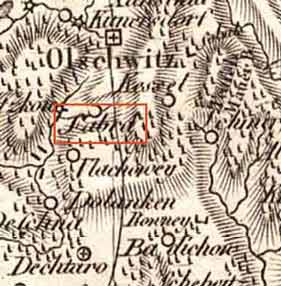 |
Oral family history has it that the Sabert line originates from Austria and came as sculpturers and stonemasons during the reign of emperor Charles IV (1347-1378) to Prague to contribute in making this city the pearl of the empire. Even though we cannot verify this since church records in this area do not go further back than the end of the 30 years war (1618-1648), it is interesting to note that we find a Petrus Gattrer in Prague in the year 1352.
The common ancestors of the Sabert line are Joannis Gatter (born ca. 1625) and Rosina (died 13. Dec. 1719 in the village of Sabert). With their children the line begins to prosper and to rapidly multipy. These children were:
|
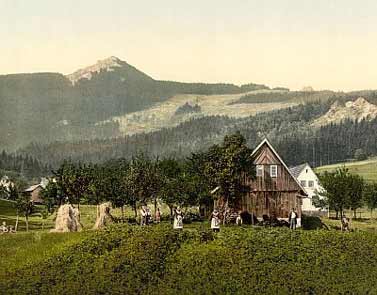 |
|
|
Above a traditional farmhouse on the slopes of Mount Jeschken. |
The descendents of Joannis Gatter soon spread over the close by villages and towns. Before world war II they could be found in (Czech names in italics):
| Aussig/Elbe (Usti) Bad Kunnersdorf Böhmisch Aicha (Cesky Dub) Böhmisch Leipa (Ceska Lipa) Budikow Dolanken Gablonz (Jablonec) Hühnerwasser (Kuri Vody) |
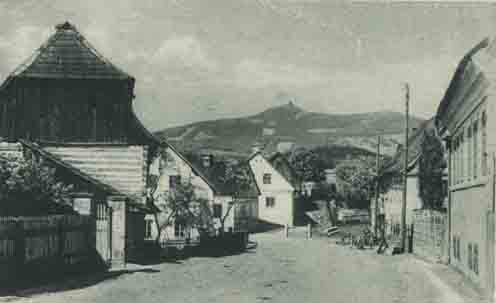 |
|
| Karlsbad Koncin |
The town of Oschitz with Mount Jeschken. |
|
| Krassa Maffersdorf Nahlau (Nahlov) Oschitz (Oscezna) Sabert (Zabridi) Reichenberg (Liberec) Reichstadt (Zakupy) Tetschen Wlachei (Vlachovey) |
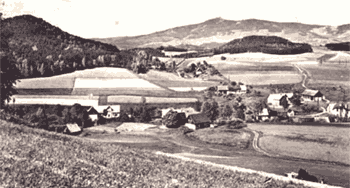 |
|
|
The village of Sabert in the foothills of Mount Jeschken, Northern Bohemia (around 1940) |
||
Members of this family served in the Turkish-Austrian wars, participated in the siege of Vienna in 1683 and the conquest of Belgrade in 1717. They served in the 7 years war between Austria and Prussia and fought in the revolution of 1848 against the monarchy.
Most of them were farmers in the early centuries, but there were sculputrers among them as Wenzelaus Gatter (1693/94-1753) who worked in Vienna and around 1718 returned to his native Bohemia where still today his baroque masterpieces decorate churches and mark town squares. One of them can be admired in Böhmisch Aicha (Cesky Dub) - a statue from around 1728, commemorating the times of plague.
The Bohemian Gatters also served also gamekeepers, hunters, foresters, and some of them were even infamous poachers (one of whom paid it with his life).
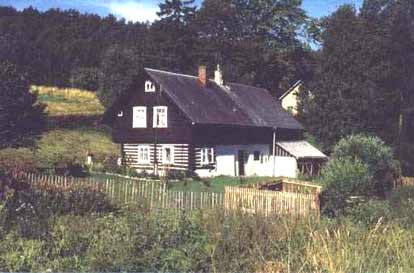 |
|
Sabert house No. 9. Here lived Anton Gatter (born 1740) - his son Wenzeslaus Gatter, the famous sculpturor and stomne mason, was probably born here. |
In side lines this family of Gatters has ancestry that can be traced as far back over a thousand years, among these lines are the the noble families of:
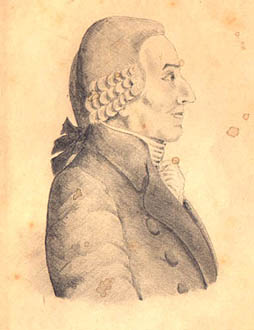 |
von Alvensleben von Bismarck von Bülow von Dobschütz von Gersdorff von Haugwitz von Henneberg von Heynitz von Köckeritz von Koenneritz von Luttitz von Meckaw von Nostitz von Polenz von Rechenberg von der Sahla von Schleinitz von Theler von Zezschwitz |
|
|
One of the Bohemian Gatter’s
ancestors is the nobleman Otto Bernhard Benjamin von Zezschwitz
(1707-1782)
|
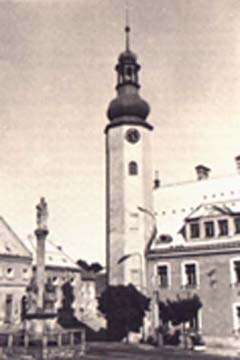 |
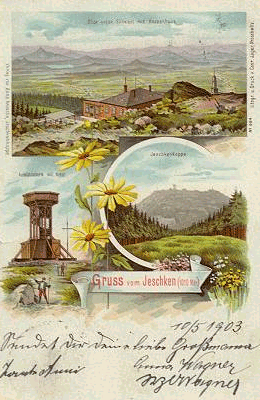 |
|
|
The baroque statue on the Böhmisch Aicha town square commemorating the plague. Created around 1728 by the sculpturer and stonemason Wenzeslaus Gatter |
An old postcard from 1903 picturing the view from Mount Jeschken on the homeland of the Gatter family. At the turn of the century the mountain was a favorite destination for Bohemian "Wanderlust". |
One of the Gatters who left Sabert was the stonemason Wentzl Gatter(1795-1840). He moved to the close by village Wlachei where the quarries were not exhausted yet and where business apparently was more favorable. He married on November 7, 1820 Anna Kabatek (ca. 1796- after 1871) form Rostein who was of Czech descent.They were blessed with 12 children, many of whom however died fairly young.
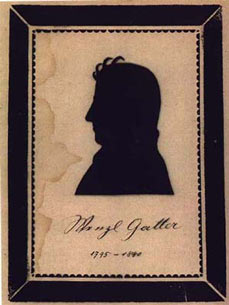 |
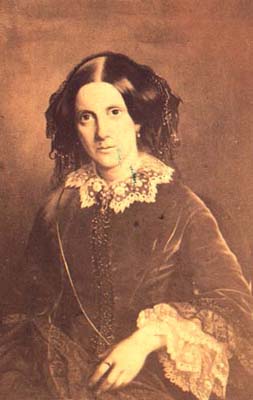 |
|
|
Wentzl Gatter (1795-1840)and his wife Anna Kabatek (ca. 1796- after 1871) |
||
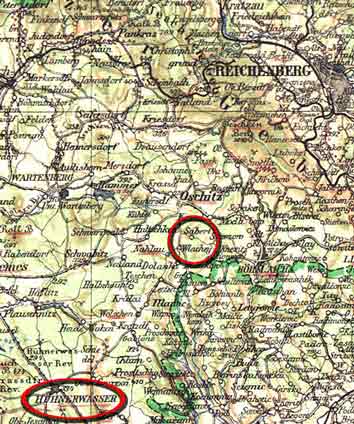 |
One of these children was Franziskus Seraphicus Gatter (1828-1909) who left Wlachei around 1850 and moved to the bigger town of Hühnerwasser, some 20 kilometers to the west, located on an old trading route. His trading bussiness and metalworking shop went well and he soon purchased the old postal station of the town (built in 1692) at the market square. This building was from then on known as the “Gatterhouse”, but was destroyed by the Russians who used the town (after the expulsion of the Germans from Czechia at the end of World War II) as a missile training site.
|
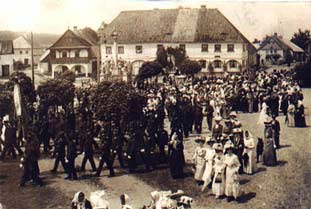 |
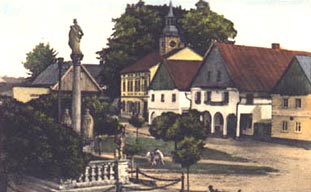 |
|
|
The big Gatterhouse(center right) in the old Bohemian trading city of Hühnerwasser (around 1910 at a town celebration) |
View from the Gatterhouse
on Hühnerwasser’s market square around 1930
|
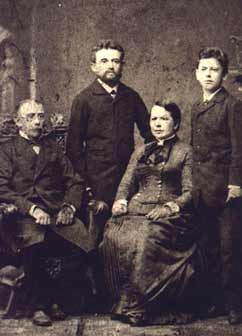 |
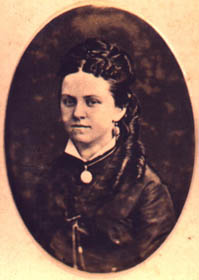 |
|
|
Franz Seraphicus Gatter (1828-1909) with his second wife Johanna Kauschka (1846-1901) and the sons Franz (1853-1887 from first marriage) and Arnold (1870-1940). |
Helene Gröschel (1826- 1865)
The first wife of Franz S. Gatter |
Franz Seraphicus Gatter had 8 children in two marriages. From the first marriage with Helene Gröschel (1826-1865) is the son Josef Gatter (1856-1929) who achieved local fame for bringing running water to many villages of the area in the 1880s and 1890s. He built pumps that could transport up water for over a hundred meters. In one village he therefore had to stand trial, because he was accused of sorcery. It was not at all usual in those days to see water climbing up from the valley and splash on the market square.
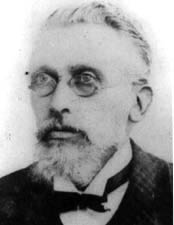 |
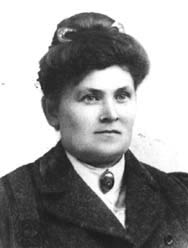 |
|
|
|
||
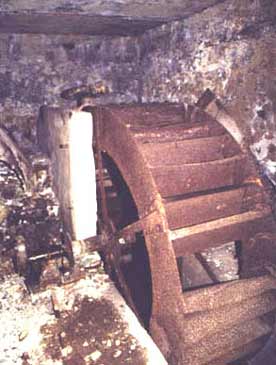 |
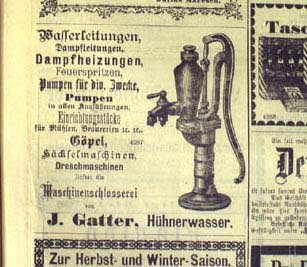 |
|
|
A water wheel build in 1890 powering
one of Josef Gatters pumps
|
An advertisement that appeared
in the newspaper of Böhmisch Leipa at the turn of the century,
praising the products of Josef Gatters metal working business |
The descendents from the marriage of Josef Gatter with Marie Eiselt were numerous. Among them the builder of the Gatter Car.
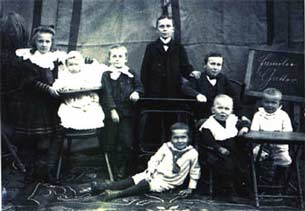 |
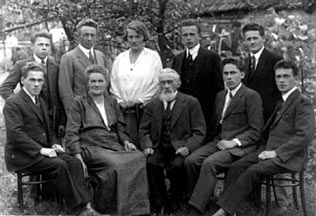 |
|
|
Children of Josef Gatter and his
wife Marie Eiselt in Hühnerwasser around 1910
|
Josef Gatter and his wife Marie
Eiselt with their 8 children in 1928
|
Their descendets (and their spouses) were:
|
Willibald Gustav Gatter 1896 -
1973+ Emilie Hoyler - 1911
Maximilian Ernst Gatter 1898 - 1976+ Emilie (Emmi) Czeke 1900 - 1969 Frieda Marie Helene Gatter 1899 - 1973 + Emanuel Hlavsa- 1941 Ernst Theodor Gatter 1901 - 1973 + (1) Marie Priebisch 1911 - 1955, + (2) Paula Jungbauer 1925 - Rudolf(Rolf) Friedrich Gatter 1903 - 1981+ Else Hoyler 1919 - 1974 Friedrich(Fritz) Ludwig Gatter 1905 - 1943 († World War II) + Anna Babinsky 1906 - 1998 Arthur Wilhelm Gatter 1907 - 1990 + Gertrud Ritschel 1917 - 1993 Arnold Alexander Gatter 1909 - 1941 († World War II) + Friedel Dingeldein |
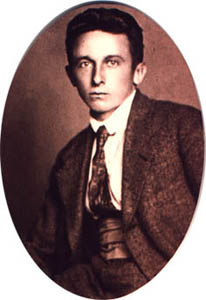 |
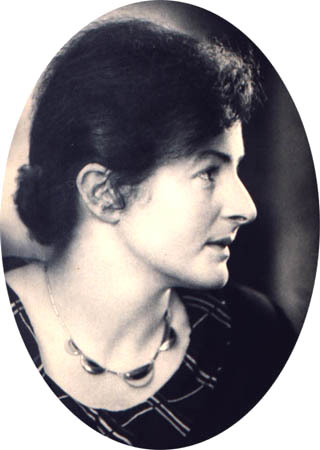 |
|
|
|
||
| At the end of world war II the bulk of the members of this Gatter
line was expelled from Bohemia, their villages were destroyed or became
ghost towns that rapidly dilapidated. Most of them live in Germany
today, many in its south in the states of Baden-Württemberg and
Bavaria. In Hühnerwasser even the cemetary was destroyed. All
that has survived are memories and some photos, as this one of the
Gatter family grave in Hühnerwasser in around 1940:
|
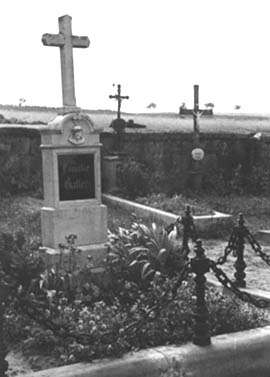 |
Copyright:
Gatter Archive 2000-2008
Any distribution and use of material displayed on the Gatter History Archive
Web Page
other than for personal purposes will be prosecuted
Contact